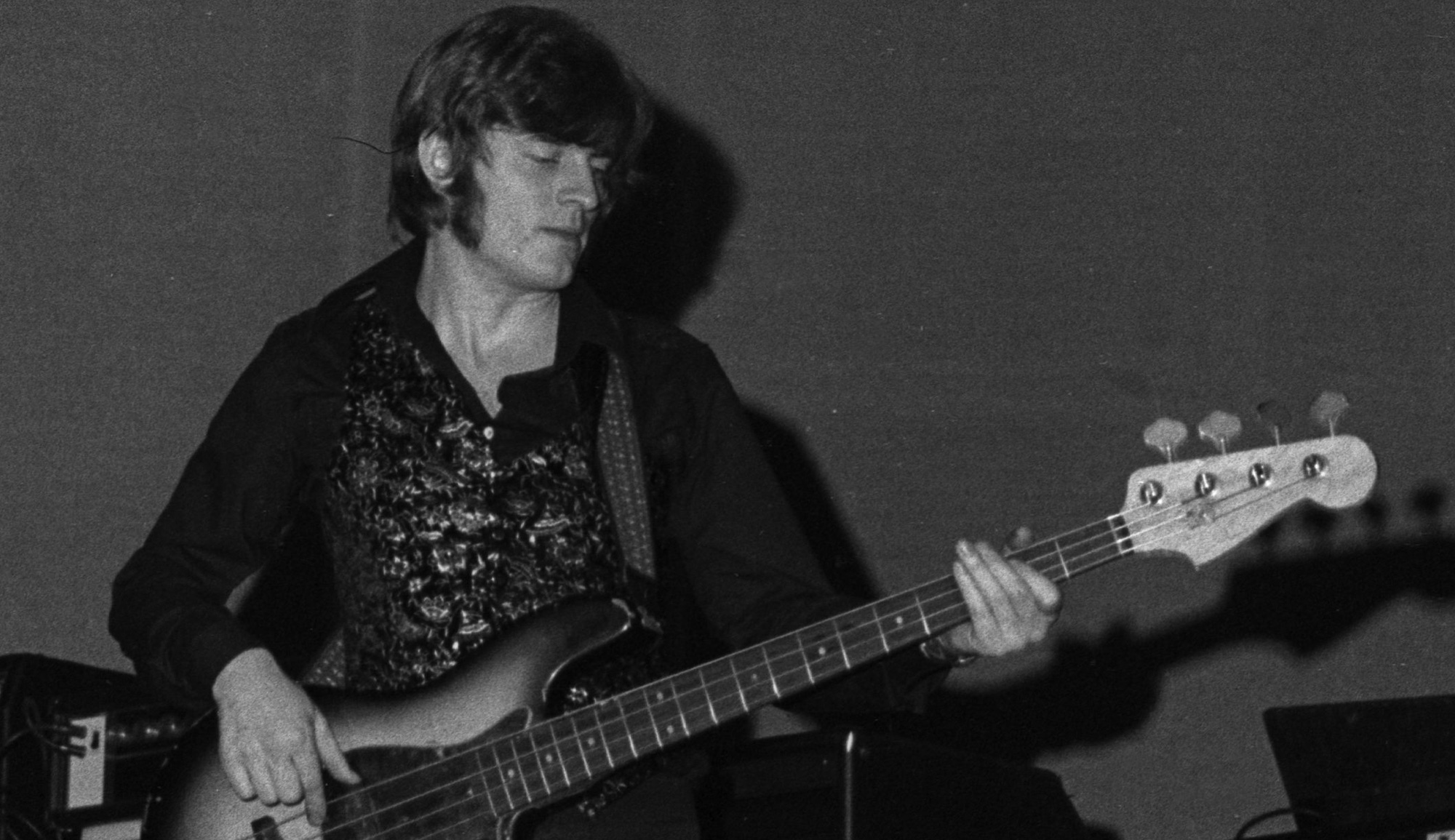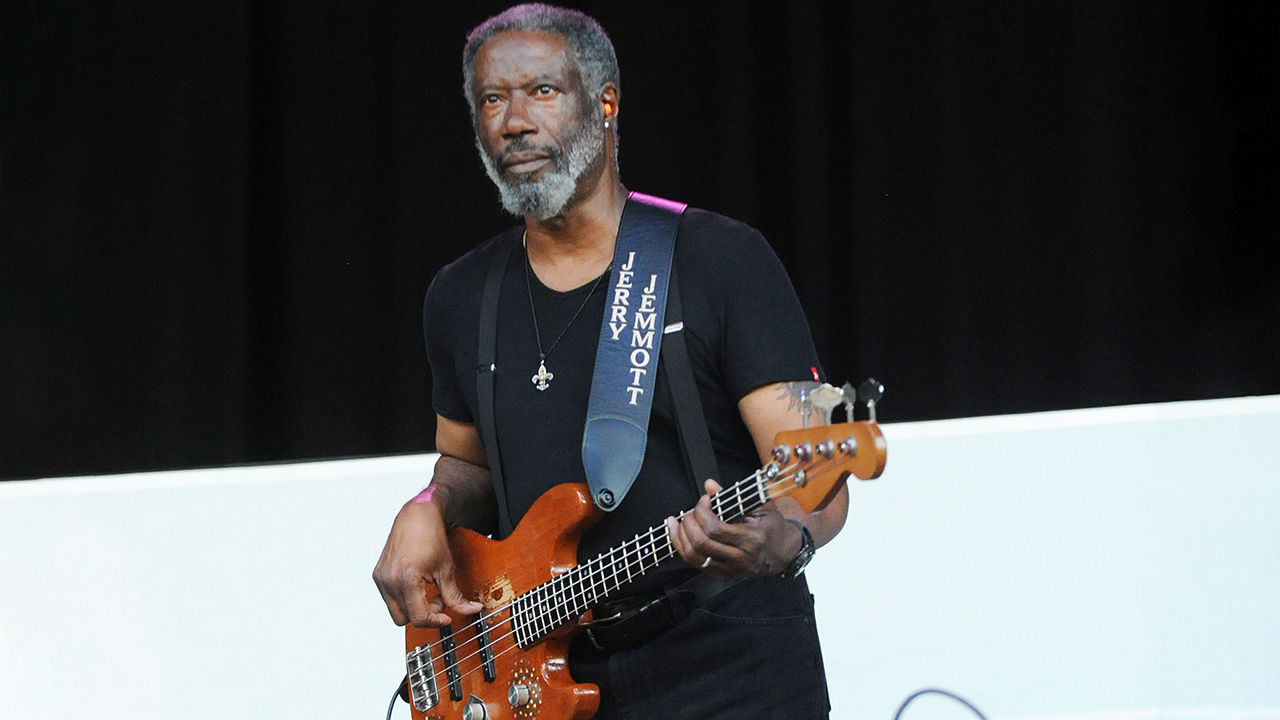“John Bonham and I would push the tempo and play it ridiculously fast for minutes on end while Page wailed away on the guitar”: John Paul Jones wasn't married to a single bass technique, but for these Led Zeppelin classics, one finger was all he needed
Using just the index finger may not seem like the most “efficient” way to play, the low-end legend wrote in his GW column, but he loved the consistent attack and dynamic control that he got from using one finger

Starting in 1996, Guitar World was honored to publish a handful of lesson columns authored by Led Zeppelin bassist John Paul Jones. The following is one of these columns. It has been edited in certain instances for use online.
This month, I'd like to talk about technique, specifically right-hand articulation.
I've heard a lot of bassists fuss over their right-hand technique over the years, many of them claiming to have settled on a one-size-fits-all method of articulation that's ideal for any musical circumstance. I've always preferred to take a more pragmatic approach and use whichever right-hand technique sounds best and feels the most natural for any given situation.
For instance, sometimes I find using a plectrum or my thumb to be more effective than playing fingerstyle, or vice versa.
For “galloping” rhythms, like the main part to Achilles Last Stand, or the intro riff to Immigrant Song, which we looked at last month, I prefer to use a pick so I can get that growly, “clangy” sound.
Back in the Sixties, when I was doing a lot of freelance session work on bass guitar, I would often be called upon to play with a pick – “More ‘click,’ please...”
When playing fingerstyle, I usually use my index and middle fingers to pluck the strings, mostly in a strictly alternating fashion, but not always – sometimes it feels awkward to do that.
All the latest guitar news, interviews, lessons, reviews, deals and more, direct to your inbox!
Occasionally, I'll attack a note with both fingers for a stronger attack. That's how I played the pumping 16th notes during the intro to Out on the Tiles.
For certain parts, I actually prefer to use just my index finger. This may not seem like the most “efficient” way to play, but I like the consistent attack that results from using one finger.
This is the same reason guitarists sometimes choose to use consecutive downstrokes, instead of alternating downstrokes and upstrokes, to strum or pick fast eighth- or 16th-note rhythms; even though it may not be the easiest way to play a part, the resultant uniformity of attack is well worth the effort spent.
I feel I have the most control over dynamics and “touch” when plucking with my index finger – it's one of the things that's often helped me get a nice, round tone out of my instrument.
As far as facility is concerned, I've found that I can actually be quite nimble playing this way if I relax and economize movement.
A good example of a part that I wrote and played using this single-digit approach is the main riff to Good Times, Bad Times.
The run in the second bar is built upon the D root-fifth-octave shape in the 5th position.
This figure can be rather challenging to perform at tempo because of all the string crossing involved. It just seemed so much simpler to me to use one finger instead of two or three to play this part because I didn't have to think about which finger I'm using to pluck which note or string.
When crossing from a higher string to the one just below it, as in the second bar, I usually use what's called a rest stroke. To do this, simply drag the finger over the lower string after plucking the higher string.
If you listen to the a capella bass break at the end of the song's first chorus, you'll notice the fairly consistent attack and tone, which is the result of using the same finger to pluck all the notes.

Another noteworthy example of this technique in action is the chorus part to Ramble On, from our second record.
In the second bar, I'm pedaling on the root, A (D string/7th fret), in a steady 16th-note rhythm, and jumping up to the fifth, E (G string/9th fret), and the fourth, D (G string/7th fret). Again, notice the even, controlled attack of the notes here.
After having used this technique for a few years I started getting to the point where I was very comfortable plucking the strings with just one finger. I would use it to play the fast jam part of Dazed and Confused.
When performing this part live, Bonzo [Zeppelin drummer John Bonham] and I would push the tempo and play it ridiculously fast for minutes on end while [Jimmy] Page wailed away on the guitar.
I found that by using hammer-ons, pull-offs, and rest strokes, I could play this repeated figure quickly and cleanly as long as I wanted to without becoming fatigued.
As you develop your own style, keep in mind that there is no right or wrong way to play. Use whichever technique feels good to you at any given moment.
- This lesson originally appeared in the March 1997 issue of Guitar World. Subscribe and save.
The bassist for Led Zeppelin, one of rock's greatest bands, John Paul Jones is universally recognized as one of the greatest bassists of all time. He's also a highly regarded multi-instrumentalist, arranger, and producer.
You must confirm your public display name before commenting
Please logout and then login again, you will then be prompted to enter your display name.



